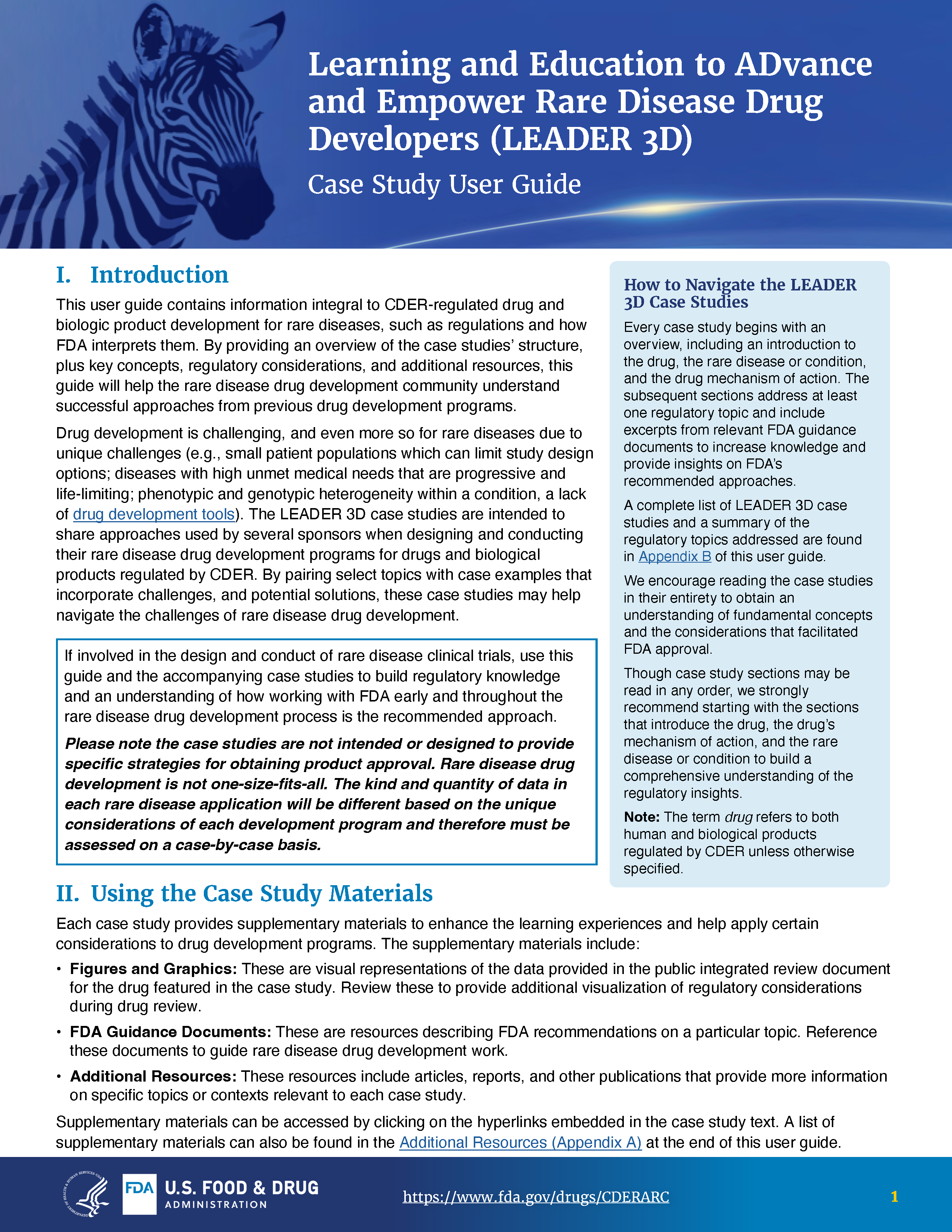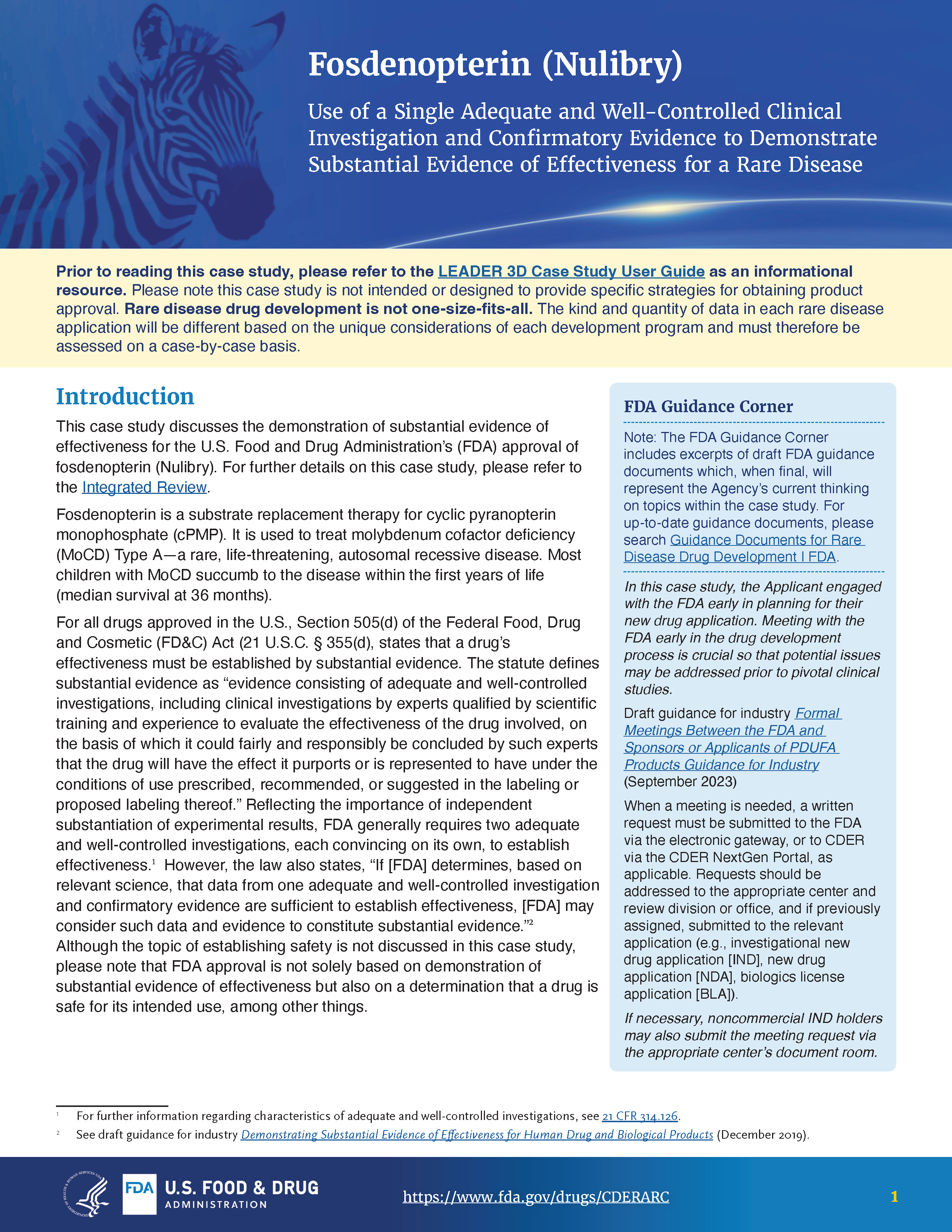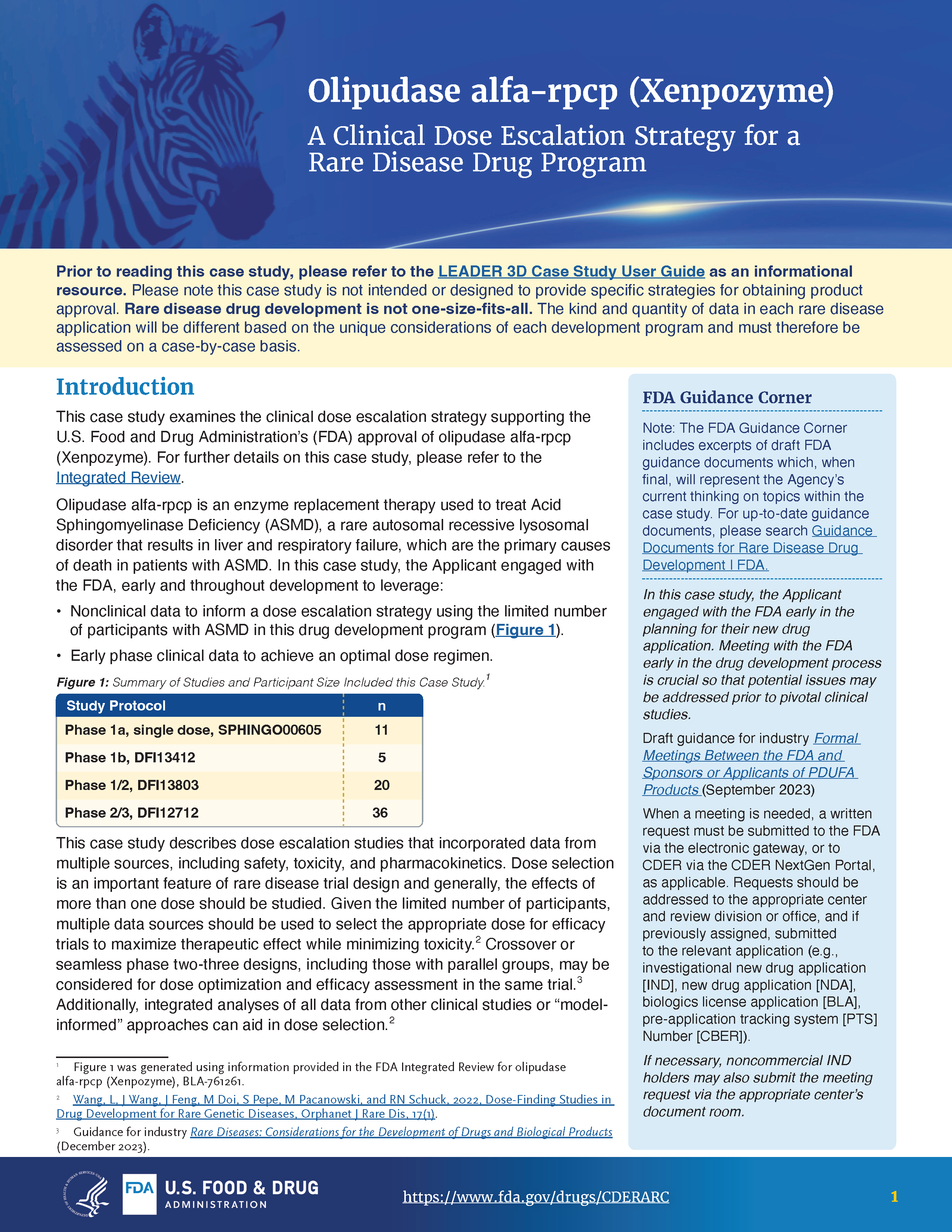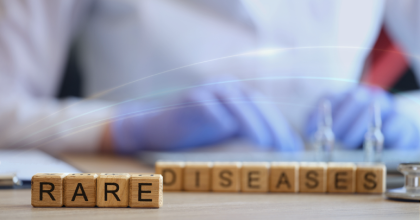Learning and Education to ADvance and Empower Rare Disease Drug Developers (LEADER 3D)
As part of the Accelerating Rare disease Cures (ARC) Program, CDER’s Rare Diseases Team (RDT) inaugurated the Learning and Education to ADvance and Empower Rare Disease Drug Developers (LEADER 3D) initiative to better understand and address the unique challenges in bringing rare disease products regulated by FDA CDER to the market. Rare disease drug development can be challenging for numerous reasons, such as small -and sometimes very small- patient populations, genotypic/phenotypic heterogeneity within a disease, and novel endpoint development and selection, all in the context of often serious and life-threatening diseases without approved therapies. These commonly faced rare disease drug development challenges can make study design, conduct, and interpretation complex. CDER recognizes the unique challenges drug developers face in demonstrating the safety and effectiveness of drugs that treat rare diseases. The goal of LEADER 3D is to develop educational content based on the needs of rare disease drug development stakeholders.
Educational resources on this page:
Videos | Case Studies | Public Report of External Stakeholder Analysis | Additional Resources
Videos
Video 1: Challenges, Strategies, and Regulatory Considerations for the Design of Rare Disease Clinical Trials
This video is the first resource as part of the LEADER 3D effort. The video provides information about demonstrating substantial evidence of effectiveness and approaches to clinical trial designs that are informative to challenges inherent to rare disease drug development.
The following resources provide material supportive to the video content that is important for rare disease drug development:
Guidance Documents
- Demonstrating Substantial Evidence of Effectiveness With One Adequate and Well-Controlled Clinical Investigation and Confirmatory Evidence
- Demonstrating Substantial Evidence of Effectiveness for Human Drug and Biological Products
- Providing Clinical Evidence of Effectiveness for Human Drug and Biological Products
- Rare Diseases: Considerations for the Development of Drugs and Biological Products
- Rare Diseases: Natural History Studies for Drug Development
- Considerations for the Design and Conduct of Externally Controlled Trials for Drug and Biological Products
- Adaptive Design Clinical Trials for Drugs and Biologics
- Interacting with FDA on Complex Innovative Trial Design for Drugs and Biological Products
- Formal Meetings Between the FDA and Sponsors or Applicants of PDUFA Products
- Expedited Programs for Serious Conditions-Drugs and Biologics
- Rare Diseases: Early Drug Development and the Role of Pre-IND Meetings
- Investigational New Drug Applications Prepared and Submitted by Sponsor-Investigators
Good Review Practices
Websites
- Critical Path Innovation Meetings (CPIM)
- OTP Interact Meeting (INitial Targeted Engagement for Regulatory Advice on CBER/CDER ProducTs (INTERACT))
Video 2: Understanding Endpoints in Rare Disease Drug Development
Endpoints in rare disease programs, like Clinical Outcome Assessments and surrogates (e.g., biomarkers), can be challenging to develop as they are often novel or without precedent in a specific patient population. This video explains important considerations for selecting endpoints when designing clinical trials.
Guidance Documents
- Rare Diseases: Considerations for the Development of Drugs and Biological Products
- Demonstrating Substantial Evidence of Effectiveness with One Adequate and Well-Controlled Clinical Investigation and Confirmatory Evidence
- Demonstrating Substantial Evidence of Effectiveness for Human Drug and Biological Products
- Biomarker Qualification: Evidentiary Framework
- Qualification Process for Drug Development Tools
- Patient-Focused Drug Development: Selecting, Developing, or Modifying Fit-for-Purpose Clinical Outcome Assessments
- Patient-Focused Drug Development: Incorporating Clinical Outcome Assessments Into Endpoints for Regulatory Decision-Making
- Multiple Endpoints in Clinical Trials Guidance for Industry
- Expedited Program for Serious Conditions – Accelerated Approval of Drugs and Biologics
- Accelerated Approval and Considerations for Determining Whether a Confirmatory Trial is Underway
Reports
Websites
- Rare Disease Endpoint Advancement Pilot Program (RDEA)
- Clinical Outcome Assessment (COA) Qualification Program
- Drug Development Tool (DDT) Qualification Programs
Video 3: Considerations for Collecting/Using Natural History Data Fit for Use in the Regulatory Setting
A well-planned natural history study can be helpful to inform rare disease drug development, if the data are fit-for their intended use. This LEADER 3D video discusses important considerations when determining how to leverage natural history study data to support regulatory decision making.
Guidances
- Rare Diseases: Natural History Studies for Drug Development
- Rare Diseases: Considerations for the Development of Drugs and Biological Products
- Demonstrating Substantial Evidence of Effectiveness for Human Drug and Biological Products
- Demonstrating Substantial Evidence of Effectiveness with One Adequate and Well-Controlled Clinical Investigation and Confirmatory Evidence
- Considerations for the Design and Conduct of Externally Controlled Trials for Drug and Biological Products
- Patient-Focused Drug Development: Collecting Comprehensive and Representative Input
Reports
Websites
RWD/RWE
- Framework for FDA’s Real-World Evidence Program
- Use of Electronic Health Records in Clinical Investigations
- Real-World Data: Assessing Electronic Health Records and Medical Claims Data to Support Regulatory Decision-Making for Drug and Biological Products
- Data Standards for Drug and Biological Production Submissions Containing Real-World Data
- Real-World Data: Assessing Registries to Support Regulatory Decision-Making for Drug and Biological Products
- Considerations for the Use of Real-World Data and Real-World Evidence to Support Regulatory Decision-Making for Drug and Biological Products
- Submitting Documents Utilizing Real-World Data and Real-World Evidence to FDA for Drugs and Biologics
Case Studies
Case studies are not intended or designed to provide specific strategies for obtaining product approval. Rare disease drug development is not one-size-fits-all. The type and quantity of data in each rare disease application will be different based on the unique considerations of each development program and must therefore be assessed on a case-by-case basis.
User Guide for Case Studies
This user guide contains information integral to CDER-regulated drug and biologic product development for rare diseases, such as regulations and how FDA interprets them. This guide serves as an informational resource for the case studies below.
Download the User Guide for Case Studies
Case Study: Fosdenopterin (Nulibry)
Use of a Single Adequate and Well-Controlled Clinical Investigation and Confirmatory Evidence to Demonstrate Substantial Evidence of Effectiveness for a Rare Disease
Download Case Study: Fosdenopterin (Nulibry)
Case Study: Olipudase alfa-rpcp (Xepozyme)
A Clinical Dose Escalation Strategy for a Rare Disease Drug Program
Download Case Study: Olipudase alfa-rpcp (Xepozyme)
Public Report of External Stakeholder Analysis
LEADER 3D Public Report of External Engagement Analysis
Read a summary of recommendations from the drug development community for continued efforts to expand outreach
To support the LEADER 3D effort, CDER engaged an independent contractor to collaborate with RDT (i.e., the project team) and complete an in-depth assessment and draft this public report. This report identifies educational gaps and needs to help inform the development and dissemination of educational materials specific to Rare Disease Drug Development (RDDD). The in-depth assessment completed by the project team included:
- Reviewing existing RDDD educational materials
- Conducting focus groups and stakeholder interviews
- Analyzing public docket comments to understand the perceived challenges and identify topics that would benefit from the expansion or development of educational materials and topics that require an increased awareness of FDA resources already in existence
The stakeholder interviews included members of industry (e.g., small-to-medium sized and large pharmaceutical companies, contract research organizations, and professional trade organizations), Patient Advocacy Groups (PAGs), and academia (including academics and clinicians) engaged in rare disease clinical research. This report identified stakeholder perceptions regarding RDDD challenges obtained from interviews and comments provided in a public FDA docket. The insights gathered from the report are being used to develop educational materials to address gaps in regulatory knowledge and challenges in rare disease drug development. The report informs CDER’s development of educational materials and efforts to disseminate information to relevant stakeholders.
Other Resources
- Accelerating Rare disease Cures (ARC) Program
- Guidance Documents for Rare Disease Drug Development
- Funding Opportunities
This page will be continually updated as additional content becomes available




